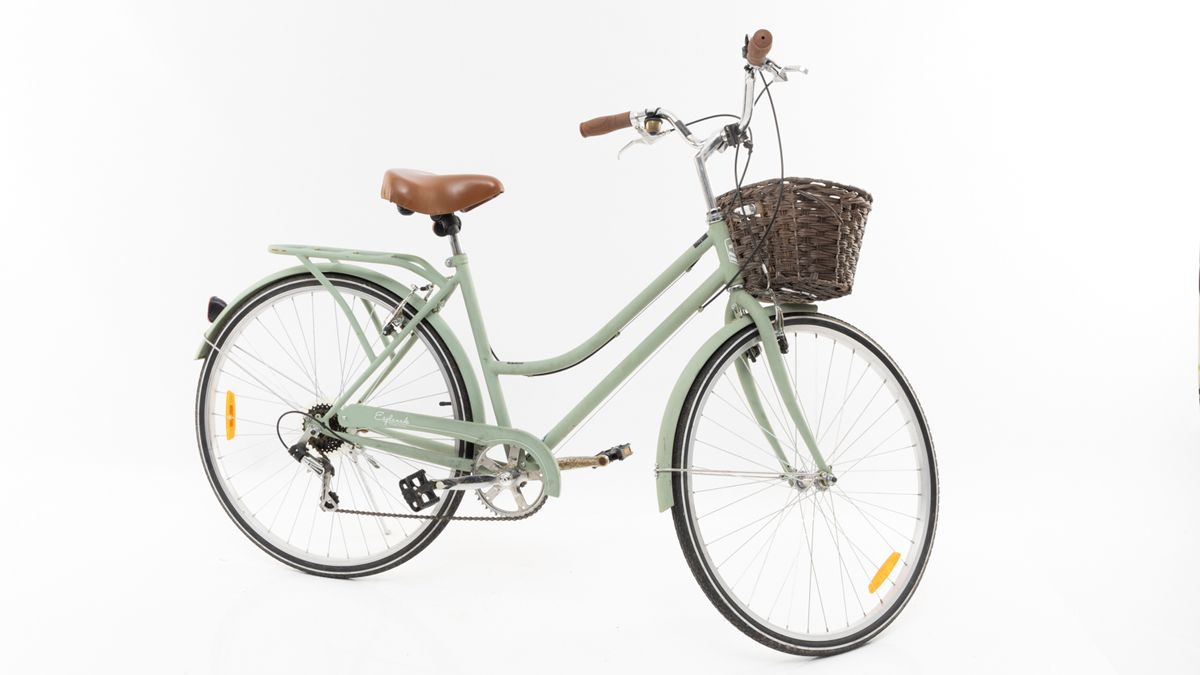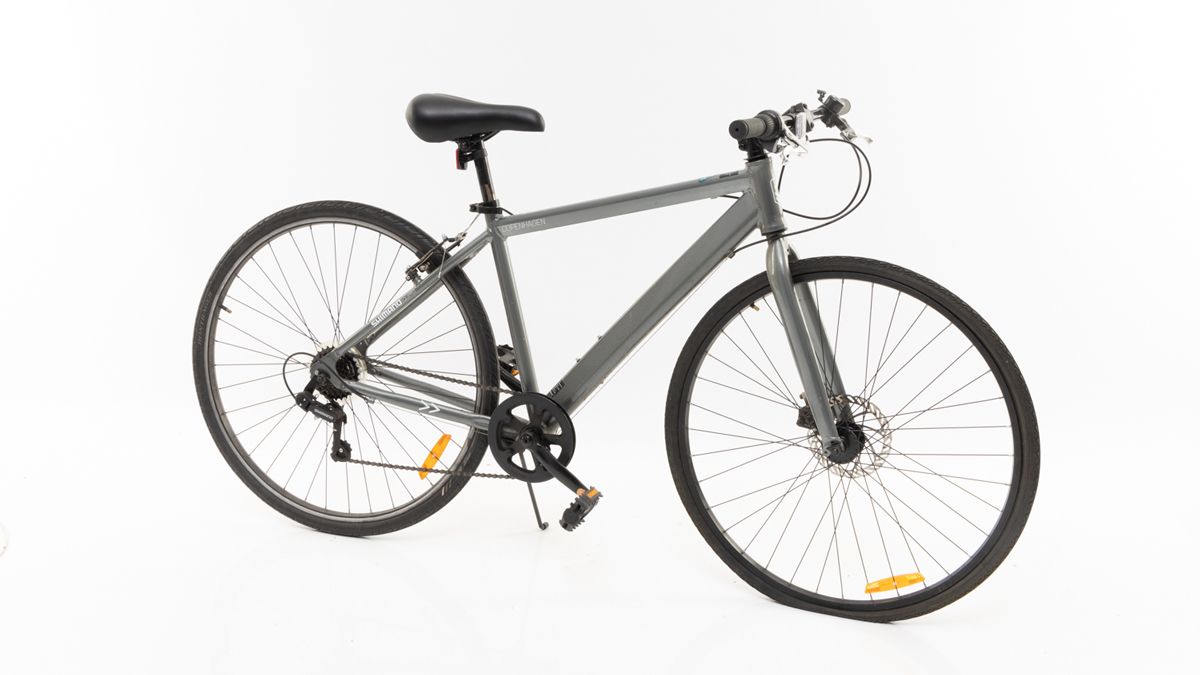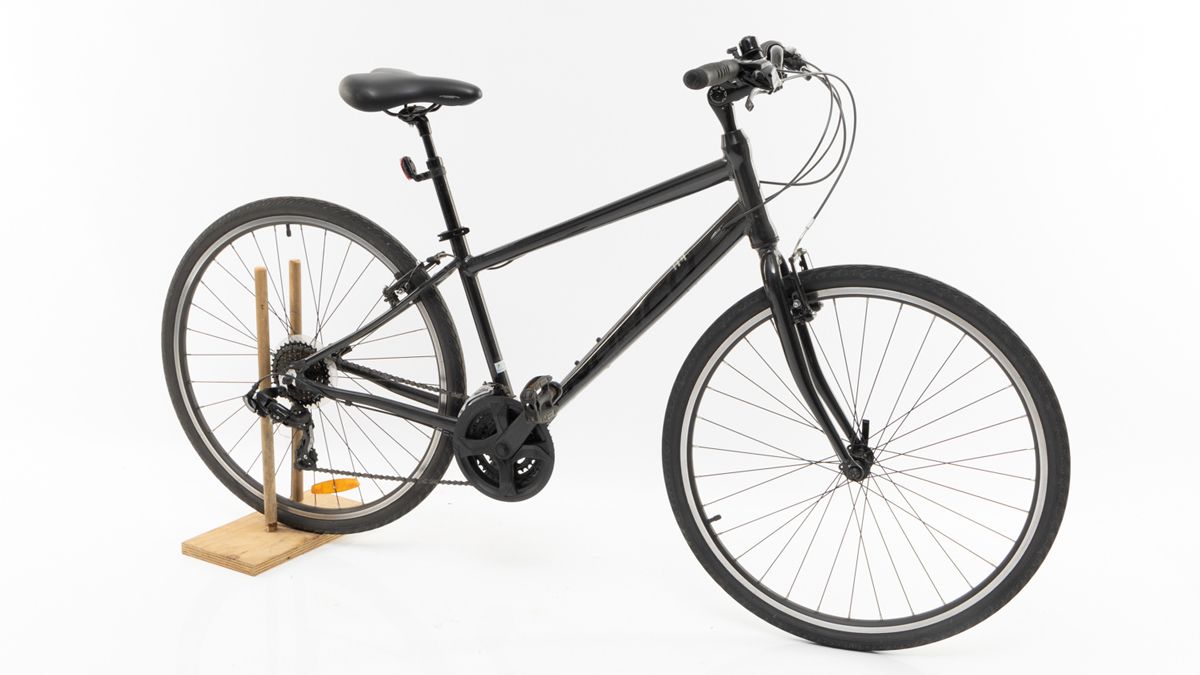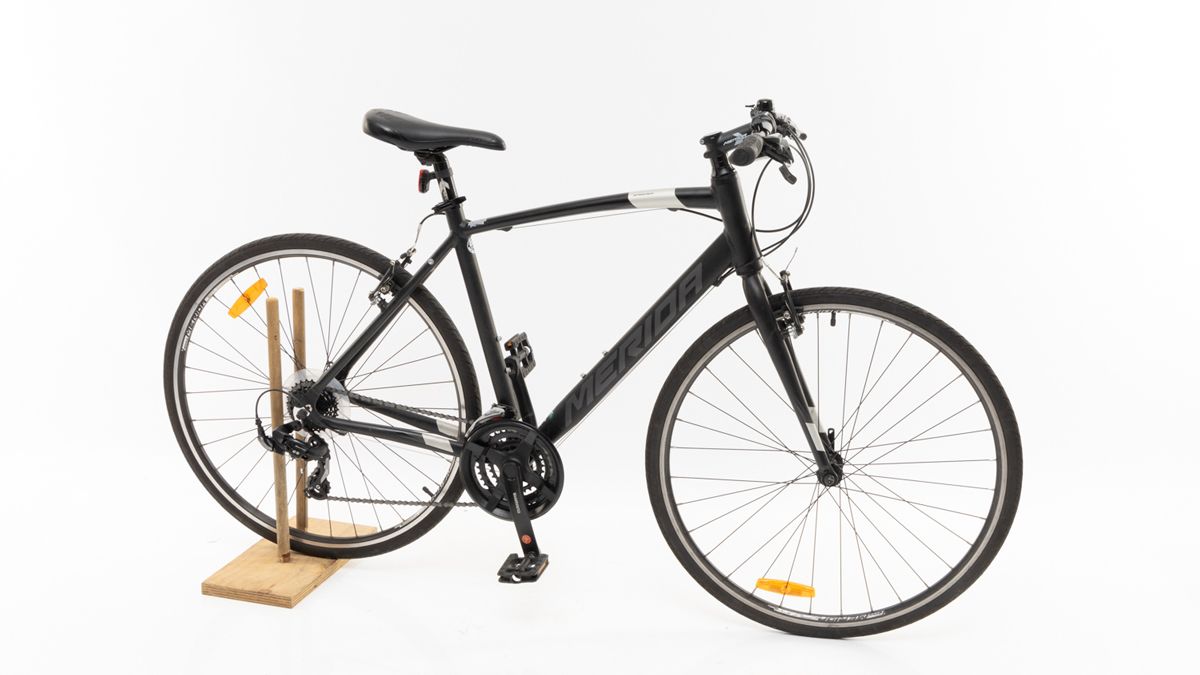Need to know
- Our investigation finds cheaper bicycles are lower quality and have a shorter lifespan
- A budget bike from a big-box store like Kmart may cost you more in the long run in repairs and maintenance
- The waste from inexpensive bicycles piles up yearly
Around 1.5 million bicycles were sold in 2022 and almost two-thirds of those were sold at big-box retailers like Kmart and Big W.
Cycling is a popular pastime – around 33% of Australian adults used a bike in 2022. And prices of bicycles vary widely, with entry-level models available for under $250, and others costing as much as a car.
But can you trust that you'll get good life out of a budget bike? Or is it better to commit to quality from the start, even if it means a higher price tag?
We investigated just how well a couple of cheap bicycles performed for longevity compared to similar, but more expensive, bicycles from bike shops.
We wanted to find out whether the big-box brands are delivering a quality product when their pricing is so low, and if a bike you buy today will last a decent amount of time.
On this page:
- How we tested bicycle longevity
- First impressions
- What happened at each service
- Findings at end of trial
- Should you buy the cheaper bike?
- How to avoid a lemon bike
- The cycling advocate's position
How we tested bicycle longevity
Our testers bought two bicycles from Kmart and two from a bike shop:
- Kmart Esplanade Cruiser ($187)
- Kmart Copenhagen ($197)
- Merida Speeder 10 ($535)
- Norco Yorkville 2018 ($543).
Four cyclists rode each bike for around for six months, using it for commuting and casual recreation. Time on the bikes ranged from 40 hours to over 70 hours, and distance travelled ranged from 600km to over 1400km.
We also had trained bike mechanics check each bike at monthly intervals, and identify any service or repairs needed.
First impressions
We had each bicycle checked when first bought to see whether they were put together well.
Most bikes are delivered in flat packs, so require some assembly. Dedicated bike shops do this by default, but you'll have to pay a small fee for Kmart to put your bike together.
From a superficial perspective, all the bicycles we bought looked fine. They also passed official Australian Standards current requirements.
Assembly
The models from a bike store were put together mostly satisfactorily, but the Kmart bikes were not. The bike mechanic had to make a lot of corrections to the Kmart bicycles before giving them to our trial riders.
Post-purchase service
You should expect a free service after you buy a bike from a bike store (around three months is normal) to make sure it's operating to the rider's needs.
Tightening and adjusting tension for the rider are standard for bike shop purchases, but we couldn't find any signs that Kmart offers the same service.
The bike mechanic had to make a lot of corrections to the Kmart bicycles before giving them to our trial riders
Ongoing servicing
By the end of our six-month trial we found that one of the cheap bicycles displayed significant rust on the frame, handlebars, wheel hubs, spokes, cranks and brake callipers.
For this bike, the mechanic recommended three services over six months to maintain functionality, compared to only one service over six months for the bike store samples.
On the other cheap bicycle, several parts were replaced due to poor-quality initial parts, especially in safety areas such as brakes and tyres.
Maintenance costs
Those services add to your maintenance expenses. In our case, it was $150 per service, which blew out the cost of the cheap bikes to almost 250% of their initial asking price!
It's also worth considering whether a bicycle mechanic will actually service those cheaper bikes. Some feedback from mechanics we have is that many just don't want to, due to poor quality builds, poor parts and impossible repairs, where things are not designed to be repaired.
"Not designed to be repaired"
Not all products are built to last, or even to be repaired. While most bikes have a derailleur (a mechanism used to change rear gears) that can be unscrewed from the hanger, the hanger on the Dutch-style bike we bought from Kmart was riveted directly to the derailleur, meaning it can't be replaced, even though our mechanic suspected the hanger was bent. In this case you'd have to replace the entire mechanism rather than just one part, which costs more money.
What happened at each service
Below is a rundown of the corrections that had to be made when we first bought each bike, as well as issues that arose at the first, second and third service checks.
Compared to the two models from the bike store, the two Kmart bikes needed many more adjustments to keep them in good working order.
Findings at end of trial
Bike shop results
Both of the bike store bicycles had issues that were dealt with by servicing regularly (once every six months), including wear and tear you'd expect with the amount of riding we did.
By the end of the test, the two bike shop samples were in good condition overall and fit for continued commuting, with some notes on replacement recommendations in the coming months.
Kmart bike results
The Kmart Copenhagen had a front brake that completely failed and needed to be replaced. In the second assessment, the rear brake was noted as about to fail so also had to be replaced.
The chain was of poor quality and was wearing out faster than the other bikes. The tyres were also of poor quality and the rear one had to be replaced as it started to crack. The brake pads were very soft as well, which meant they wore down quickly.
Overall, there were $140 of replacement part costs during the six-month test period. The rider also noticed they were getting "ghost" shifting, which means the gears would change for no apparent reason.
The second Kmart sample, the a Dutch cruiser-style Esplanade, had started to rust from the first couple weeks of use. Each time it came in for service, the bottom bracket had come loose, which would make the chain come off. The rust on the brake cables made them difficult to operate properly.
Aside from not being able to replace the derailleur hanger, we also found that the front wheel developed a wobble that was causing the wheel to rub on the brake pads.
Should you buy the cheaper bike?
While the price of bikes continues to rise, Kmart and other discount stores have attempted to help consumers by keeping prices lower.
This may seem like a good opportunity for beginners to experience a bicycle without regretting spending a lot of money if cycling isn't to their taste. Though there's a catch-22 here: if the first bike you ride results in a bad experience, it might put you off cycling if you're just starting out.
Unfortunately, there's often a cost to cheaper pricing. Most people understand that if you're paying a very cheap price, you may be sacrificing something – in the case of our bike test, it's durability.
The inferior assembly and parts degraded faster over time, which will cost you more in the long run
We found that the inferior assembly and parts degraded faster over time, which will cost you more in the long run.
And in addition to ongoing maintenance costs, these cheaper bikes can ultimately end up in Australia's waste stream, landfill or sitting in a shed gathering dust and deteriorating.
Although we only tested bikes from Kmart, we suspect we'd likely find similar issues with cheap bikes from other big-box stores.
We recommend that, if possible, you save up for a bike that might cost a bit more. It'll likely last a lot longer with fewer costs over time.
If you aren't in a position to buy a brand-new quality bike, there are some decent alternatives available. You can find plenty of second-hand bikes from bicycle shops or upcyclers for the same price as some big-box retailers. Try looking at Revolve ReCycling (Sydney) and Brainwave Australia (Melbourne).
And if you're buying a children's bike, you may be thinking it doesn't matter if it doesn't last long, as your child will quickly outgrow it. But a good quality bike could have a second and even third life with someone else's children.
Not all bike store bicycles are created equal
Bike stores can also carry very cheap bicycles with poor parts and serviceability. Even reputable bike brands carry a range of price points for the same reason. The key is to look for certain componentry that means the bike will last longer.
Of course, this puts the onus on the consumer, which is a hard task on top of everything else we deal with on a daily basis. Ideally, one of the benefits of going to a bike store is the service you'll receive, making sure the bicycle you buy suits your needs.
How to avoid a lemon bike
Steer clear of:
- plastic brake levers – they deteriorate much quicker than aluminium
- poor quality brake callipers – make sure they're aluminium
- stamped steel or plastic brake arms
- basic derailleurs – Shimano makes a variety of models under its brand name, and not all are going to serve you well, so look for a model with a sub-category (such as Shimano Alivio), not just the word Shimano
- low-quality frame and component materials – aim for aluminium rather than steel, as it's more recyclable, less heavy and less likely to rust.
Finally, make sure your bike is assembled by a professional mechanic. We found a lot of issues with the cheaper bikes we bought from Kmart and don't believe they were assembled by qualified mechanics.
The cycling advocate's position
We talked to a bike riders' advocacy group about our experiment. Bicycle NSW CEO Peter McLean says while the organisation agrees with the outcome of the results, those cheaper offerings serve an important part of a beginner cyclist's journey.
Cheaper entry-level bikes allow consumers to experience owning and using a bicycle, and can also kickstart a cyclist's journey for the next 10–30 years as they upgrade from a Kmart bicycle to more expensive and longer lasting options. Ultimately, the organisation says, it's about getting people onto bicycles to have that first experience and foster a love of cycling in a person's life.
Cheaper entry-level bikes allow consumers to experience owning and using a bicycle, and can kickstart a cyclist's journey for the next 10–30 years
McLean also related that a big-box retailer bike that only lasts 50–70 hours would probably be used recreationally, which might be a one to two-year duration rather than the high use test we carried out.
Plus, he added, there are plenty of ways to get well-serviced second-hand bicycles, whether that be through men's sheds, repair cafes and other upcycling options.
McLean acknowledged the potential damage to the waste stream, where cheaper bikes can be very difficult to recycle because of the types of materials used in their manufacture. This might be serviced by a product stewardship scheme, or a requirement for bicycle manufacturers to make sure their bikes are easily disassembled and all parts are recyclable.
CHOICE responds
We've stated our position a number of times on the need for a meaningful right to repair for Australia. This would then encourage better design standards. Either way, at the moment the system doesn't work well for the waste stream, which impacts consumers in the long run.
We also think it would be useful for Kmart to start employing a professional bike mechanic to assemble the bikes, given we found so many errors in the assembly compared to the bike shop options.
At the moment it's easy enough to take your poor-performing bicycle back to a big-box retailer and demand a refund or replacement after six months. But that just means the bike will go into the waste stream, which we all pay for eventually. Better that it was produced with a guarantee of quality componentry so it stays in both the original owner's hands longer and has a second life as a second-hand good as well.
We've already seen examples of this working in retailers like Decathlon, which offers servicing and even second-life opportunities for bicycles they sell.
Acknowledgements
For this investigation we partnered with Revolve ReCycling, an upcycling initiative that collects second-hand bikes and redistributes them to charities after servicing, refurbishing and repairing them. It also sells second-hand bikes.
We found the organisation's insights into the bicycle market very valuable, along with their onsite trained bicycle mechanics who test bikes and service them as needed.
Stock images: Getty, unless otherwise stated.







